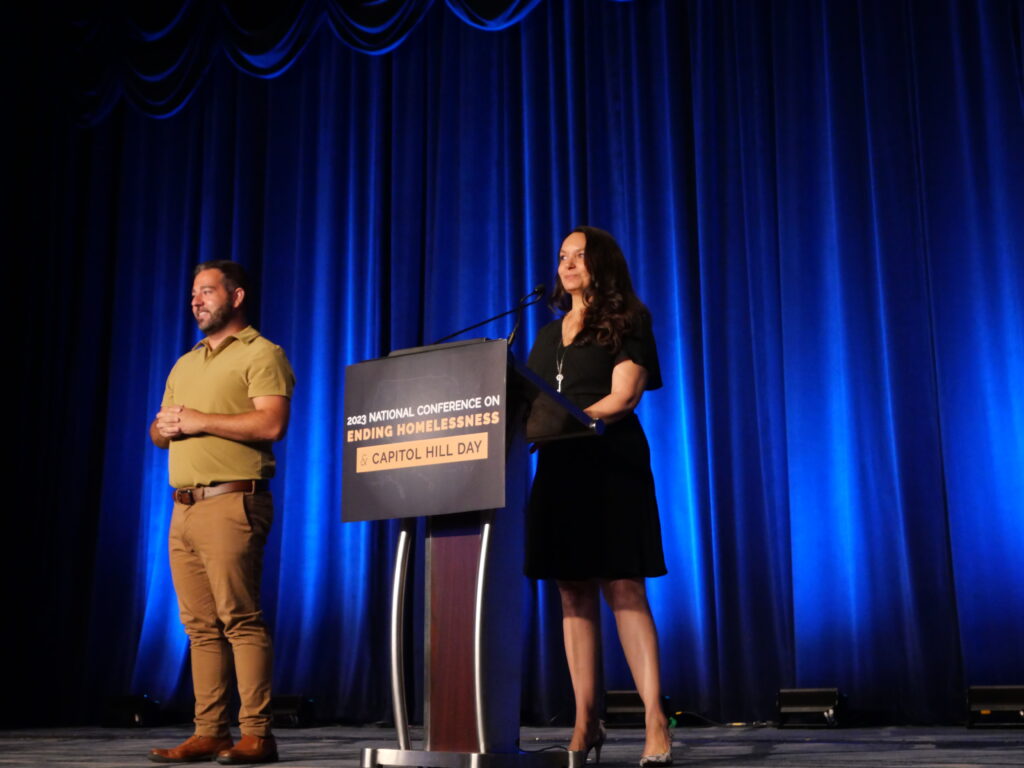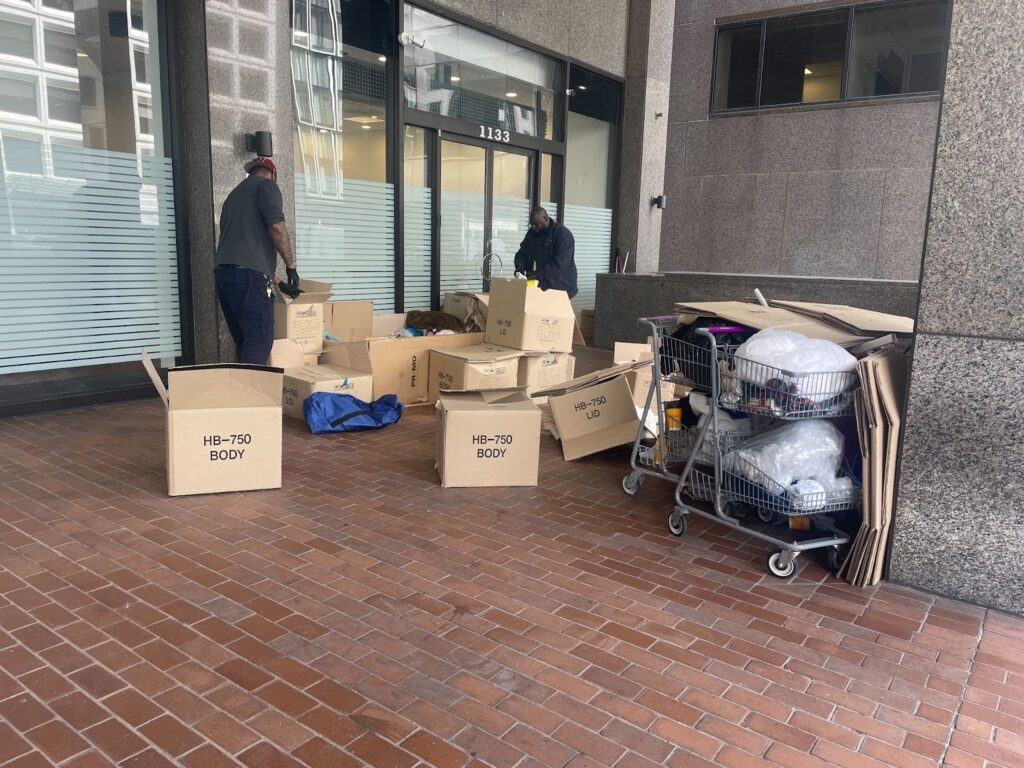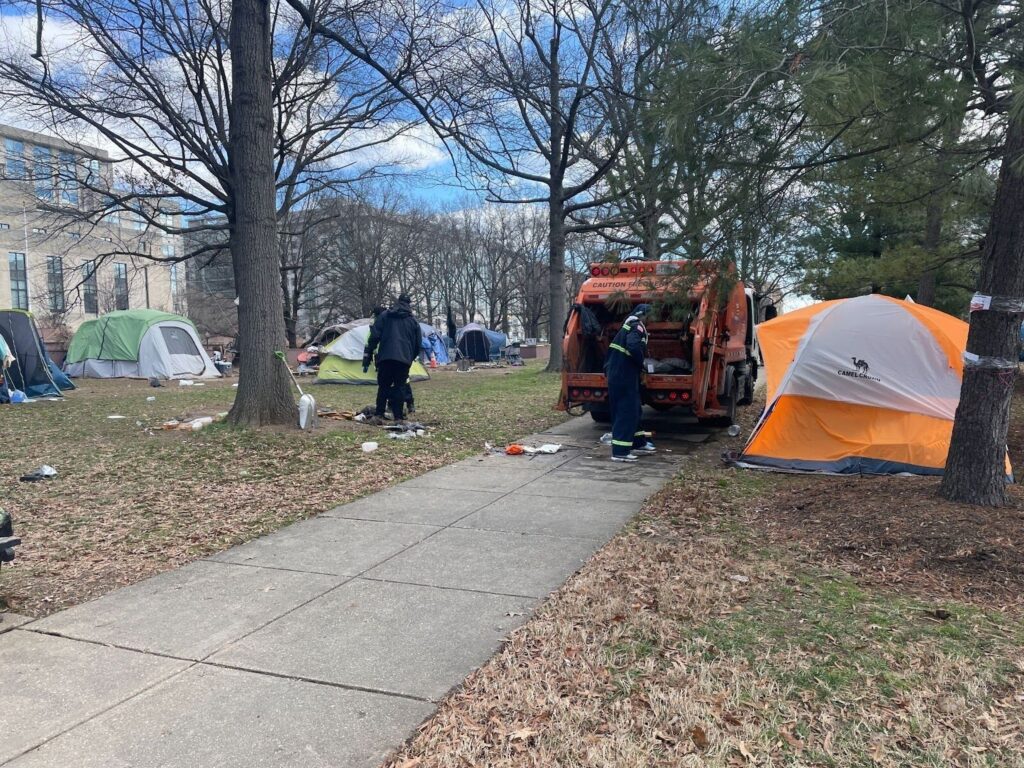Ann Oliva, the CEO of the National Alliance to End Homelessness (NAEH), has been working to end homelessness for 30 years. She’s worked in transitional housing programs, community responses and at the U.S. Department of Housing and Urban Development.
In 2022, Oliva assumed her role as CEO of NAEH, one of the prominent national organizations that advises and coordinates responses to homelessness. Street Sense caught up with Oliva at this year’s conference, held July 17 to 19 in D.C. She continued to press on priorities she established at last year’s conference, including centering racial justice and lived experience, ending unsheltered homelessness and combating negative stereotypes of people who sleep outside.
The following conversation has been edited for length and clarity.
Can you give your perspective on where we are in the process of ending homelessness?
I think it’s going to very likely get worse before it gets better. We’ve seen unsheltered homelessness rise every year since 2015. We have strong suspicions that the 2023 Point-In-Time Count will show across-the-board increases. We also know that because of the affordable housing crisis, the number of people who are at risk of homelessness is increasing. That causes more people to come in the front door than the system can actually handle. Even if the system is working perfectly, which most systems can’t because they’re not resourced in that way, without affordable housing, it’s hard to get people back out.
Wages are stagnant, the difference between rent and wages is increasing. We need systemic solutions to what is a very systemic problem, although it is often portrayed by our detractors as an individual failing. It is absolutely not that, it is a set of systemic problems that have to be addressed. The bright light there though is that people understand it in a different way, and affordable housing is a topic of conversion. We have some opportunity to hone in on that and hopefully make some changes.
When you talk about resources, to what extent is a lack of funding the roadblock?
It is a roadblock, it is not the only roadblock. And when I say funding, I actually don’t mean homelessness funding. Homelessness funding is incredibly important, we need to have more of it. When we look at the progress that’s been made on veterans, one of the reasons for that is that the scale of the federal investments is close to the need.
But I mean affordable housing resources, Housing Choice Vouchers, other types of rental assistance, cash assistance which worked incredibly well during the pandemic. It’s a beautiful case study of how when you give folks cash and you let them make their own choices, we can prevent evictions and we can prevent homelessness. We need affordable housing and rental assistance at scale and that would be a game changer for our field.
What are some of the biggest challenges we’re facing right now?
Affordable housing is the first one, so many communities are struggling with it. Services are an issue right now, as encampments grow and homelessness becomes more visible, elected leaders are being pressured by housed constituents to act, and those actions often are political decisions, not strategic decisions. And that dynamic is causing a lot of challenges for our providers, especially providers who have contracts with those same city or county or state agencies who are making decisions that we wouldn’t agree with.
What are some successes, signs of hope, promising models?
There are a few communities that are making really good progress by going into the encampments tent by tent and asking people what they want and need, and that feels like a shift in our approach, like let’s actually ask the folks outside what they want and need to be able to get housing. I think harm reduction models are something that feels really important right now and is innovative.
How is D.C. doing compared to the rest of the county?
We’re still struggling like many other big cities with unsheltered homelessness. Encampments are getting smaller because people are being driven out of the city center and it’s getting harder for providers to find folks, it’s getting harder for outreach workers to do their job.
I think that where D.C. has done really well in the past is on family homelessness, the initiatives around shelter in every ward, the work they’ve done on Rapid Rehousing has been really strong. I would love to see the work on individuals and chronic homelessness be as strong as the work that the District has done on families.
Pivoting to the Alliance — you’ve mentioned this is a new chapter for NAEH. How is the organization changing?
We want to build on all the things the Alliance has been so good at over the last 40 years and add things that are important to the field, like partnerships with people with lived experiences of homelessness. Racial justice and housing justice are important to me personally, and that’s somewhere that we have some room to grow. You’re going to see some grassroots-level advocacy from us. We just announced this fund that will provide direct financial assistance to people who have experienced homelessness and are ready to launch something creative, something artistic, a business, and just need a boost of assistance.
Why is it important to integrate lived experience and racial justice into the work?
Homelessness is part of something bigger, and it is being politicized in a way we have not experienced before. When you have a presidential candidate talking about rounding people up experiencing unsheltered homelessness and putting them in camps outside of town, we should all be alarmed. And it’s not just one presidential candidate, it’s happening at the community level and the state level. So it’s really important that broader justice movements know what’s happening so they can incorporate it into the work they’re doing around racial justice, reproductive justice, environmental justice. Homelessness is a part of all of those pieces.
Going back to the beginnings of housing policy, people were marginalized through the housing system. And the effects of those racist policies have reverberated through generations, and without racial justice we’re actually not going to achieve housing justice. To me, housing justice is really just ensuring people have safe, affordable housing of their choice that is accessible to folks, and it seems really simple, but apparently, it’s not as simple as we would like it to be.
I know NAEH recently appointed its first director of lived experience, Albert Townsend. What can organizations do better to partner with people with lived experience?
It’s our job at the Alliance to try and model some of that. Our colleagues at the Housing Justice Collective did a survey on racial equity and found communities did the things that we asked them to do, they gathered data, they know who is in their system, but they don’t know what to do next. Or they’ve included people on boards but don’t understand what the next step is. They call it the equity plateau, things went up to a certain place and now they’ve evened out. It’s our job at the Alliance to elevate those conversations so people know what to do, so the partnership isn’t tokenizing, so equity work is driving change. We’re still learning too, but to the extent that folks see us doing some principled struggle, I think it’s really important, because if we’re in principled struggle, then other folks feel more confident in going through that process.








